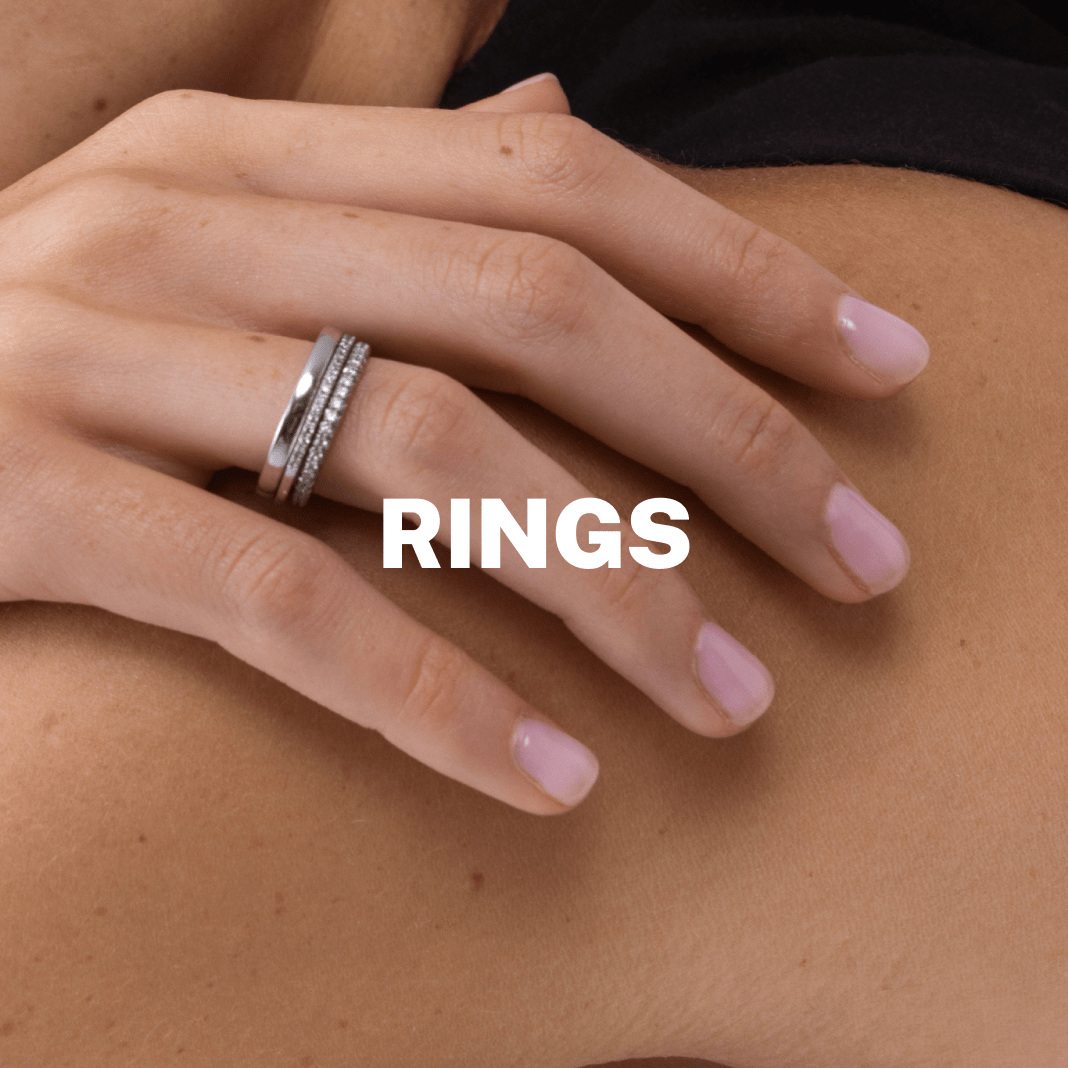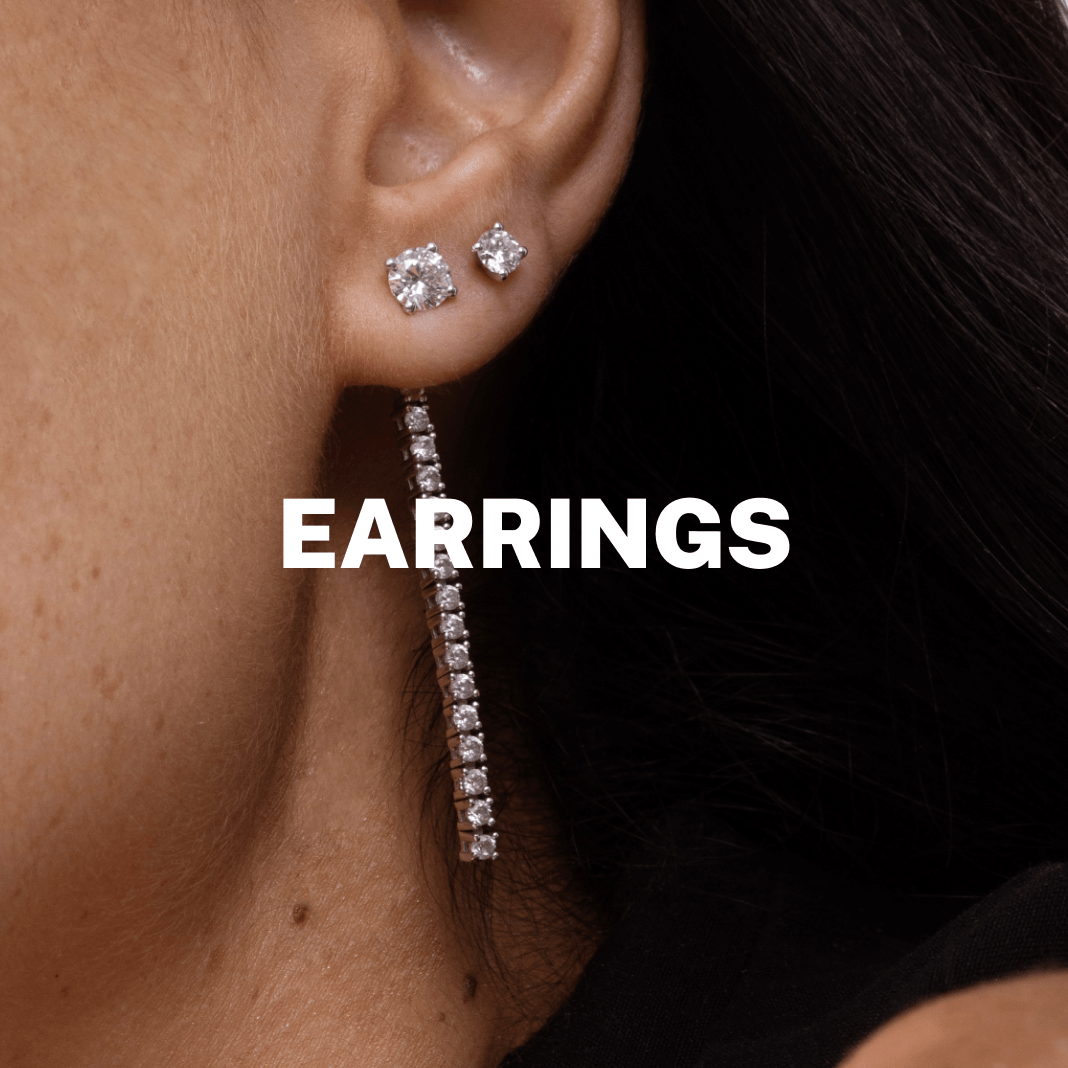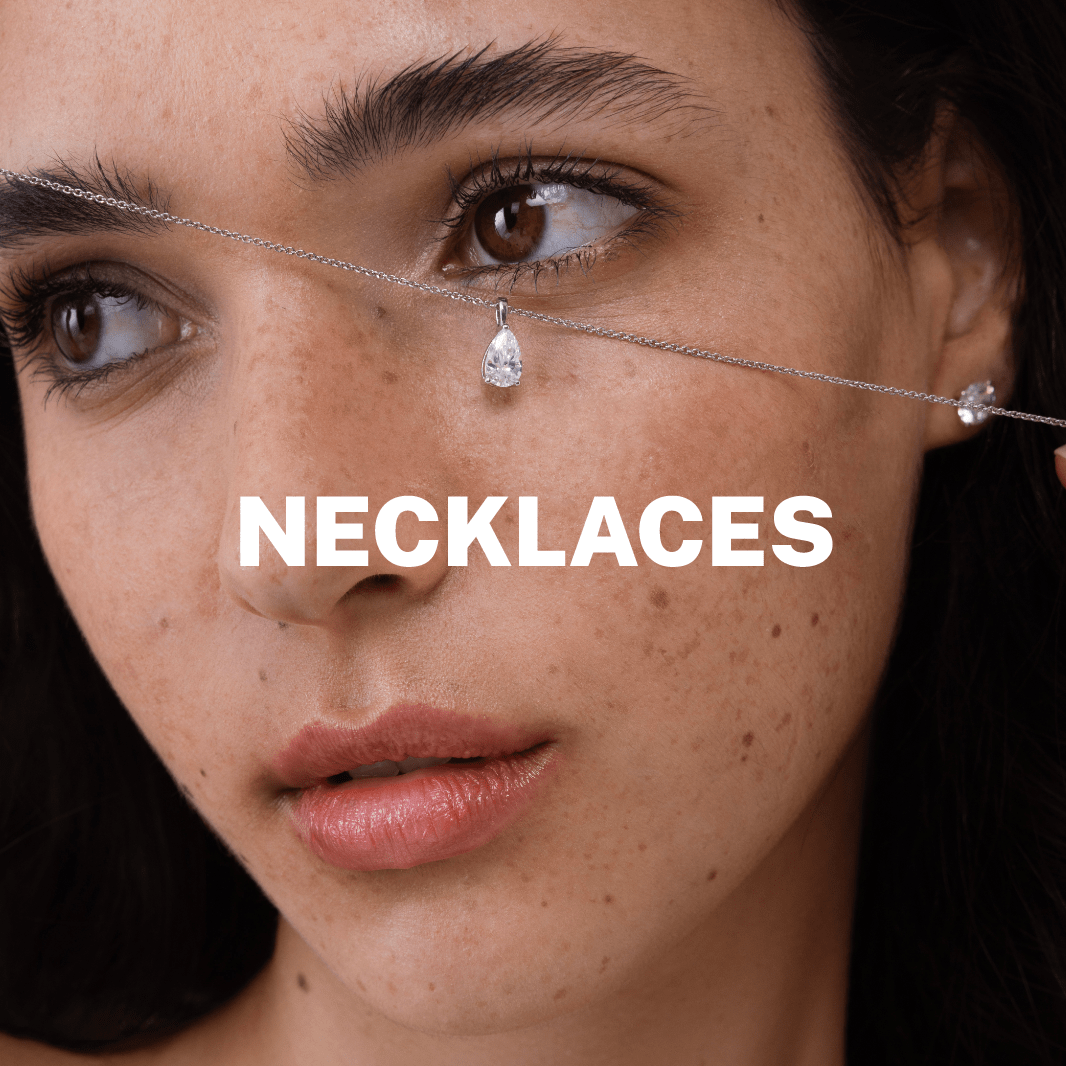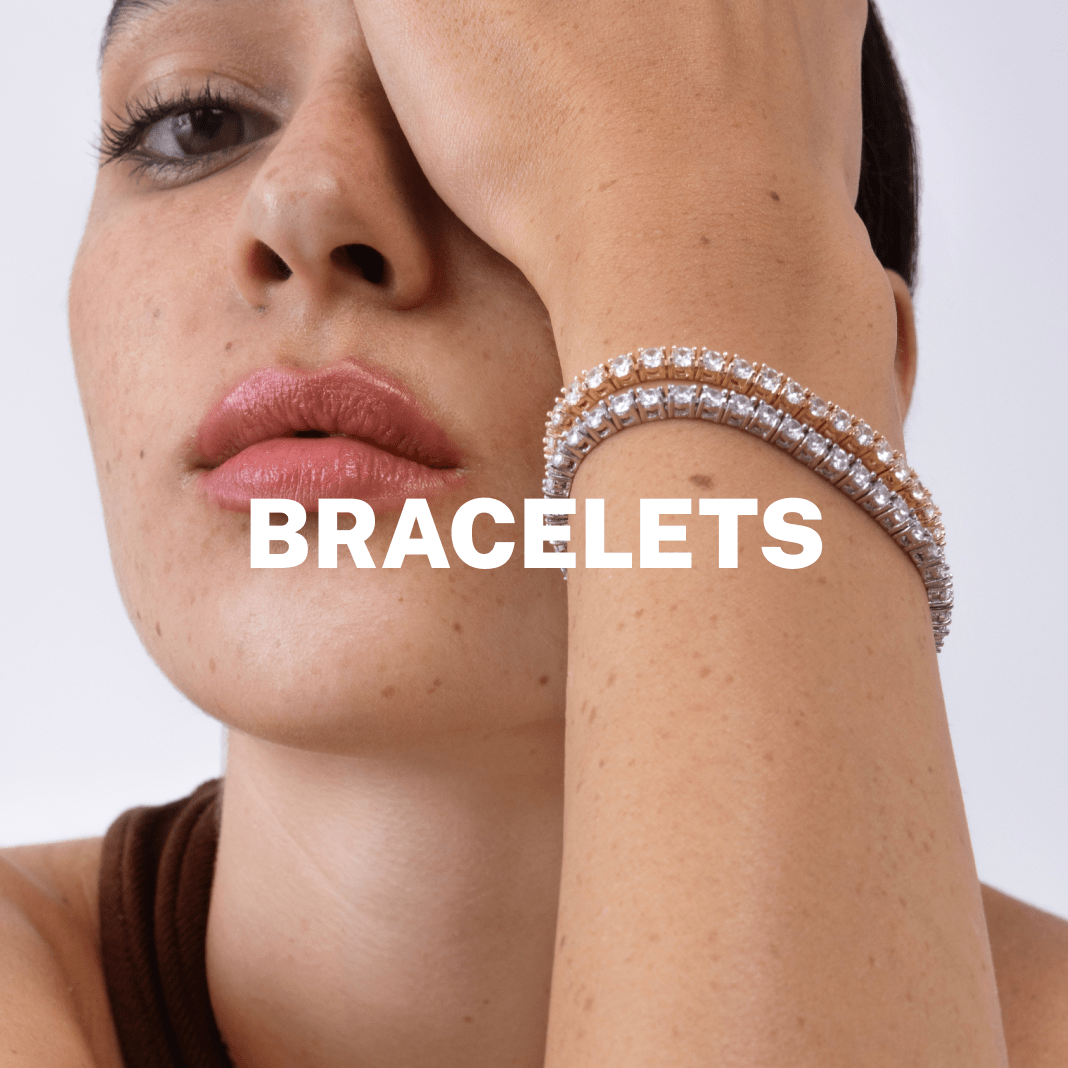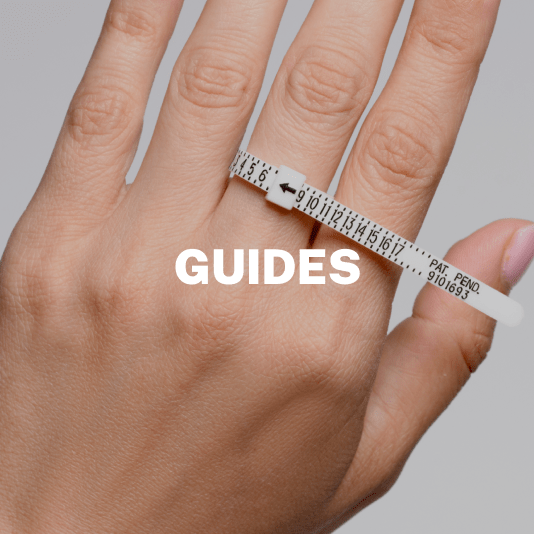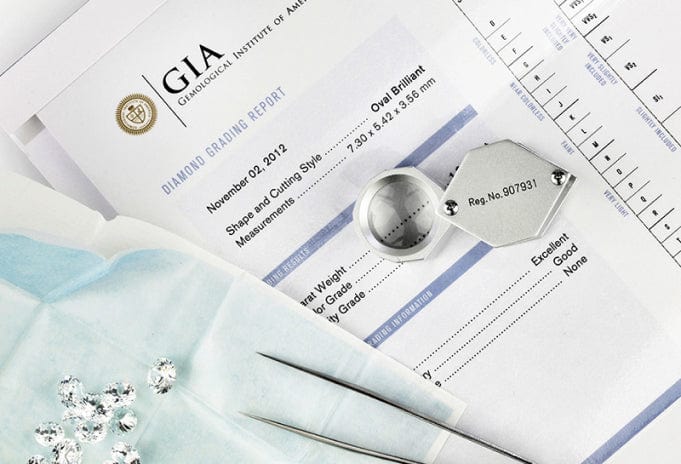
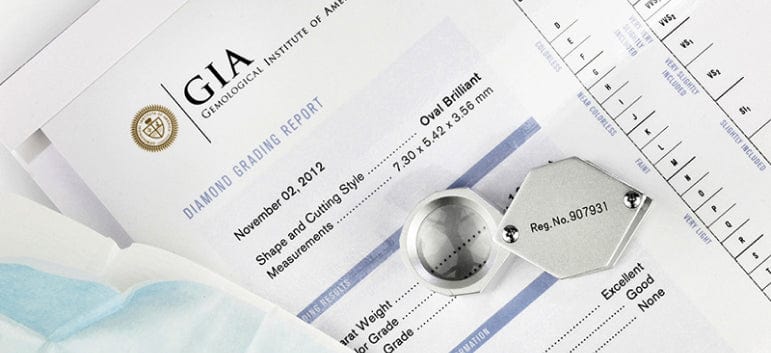
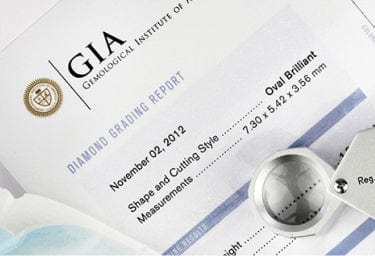
Diamond Certification
Commonly referred to as the '5th C' of the famous 4 C's of diamond grading, independent and reputable certification is without a doubt one of most important factors. The job of a gemological laboratory is to impartially grade the authenticity and quality of your diamond without any bias or relation to the jewelry retailer. Trained gemologists will use precision tools to measure the dimensions, carat weight and proportions of your diamond - the objective grading specifications - as well as inspect and grade the color, clarity, cut and fluorescence of a diamond - the more subjective grading scales.
All natural and lab grown diamonds over 1 carat purchased from Shiree Odiz come with an independent diamond certification, detailing the authenticity, origin, characteristics and quality of your diamond. All other jewelry will come with an in-house appraisal certificate.
Not all independent certification is made equally. In this guide, we’ll understand the importance of diamond certification, what information you can learn by reading its details and the differences between different diamond certification labs.
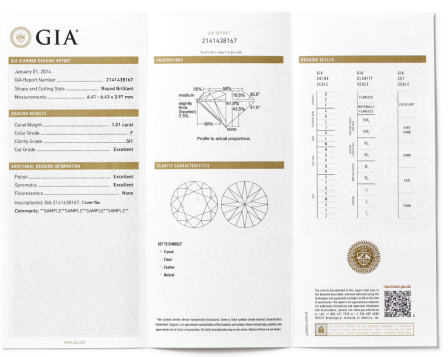
Why is your diamond certification important?
An independent and reputable diamond certificate will ensure you get accurate carat, color, clarity and cut grading on your diamond. A diamond that is sold without such certification can potentially be over-graded and overpriced for the real quality of the diamond. A reputable certificate is your only guarantee of the quality of your diamond. Furthermore, it will also test the diamond for treatment like, clarity enhancement, and its origin - whether it’s an earth mined natural diamond or a lab grown diamond.
Diamond certification vs appraisal certificates
Appraisal certificates are not the same as diamond certificates. Below are the key differences between the two documents. For most diamond jewelry with diamonds over ½ carat, you’ll want to have both.
|
Appraisal Certificate |
Diamond Certificate |
|
|
Independent |
Usually No |
Usually Yes |
|
4 C’s grading (carat, color, clarity, cut) |
Yes |
Yes |
|
Jewelry details |
Yes |
No |
|
Diamond measurements, proportions |
No |
Yes |
|
Diamond inclusion plotting |
No |
Depending on certificate and lab |
|
Valuation |
Yes |
Usually No |
What is GIA certified?
The GIA or Gemological Laboratory of America is the world standard in grading. The color, clarity and cut grading that we are all used to using is the GIA grading. As the standard for grading, they also provide the strictest and most accurate grading. This does come at a price, however. GIA certified diamonds are more expensive when compared to other labs, both due to the stricter grading (and thus higher quality diamonds) and the premium that a GIA certificate carries.
GIA graded diamonds typically come with the certificate serial number laser inscribed on the girdle of the diamond. This serial number - also on the certificate itself - can be verified on the GIA website.
Note that this isn't the same as a GIA graduate gemologist who may have been educated by the GIA but isn't subject to GIA lab standards.
Who else certifies diamonds?
With a plethora of diamond grading certificates, it can be hard to keep track of what this means for your diamond. Almost all other labs other than the GIA will have slightly different or flexible grading ranges, with each lab focusing on different niches within the industry.
IGI
The current world standard in certifying and grading lab grown diamonds.
AGS, HRD
Both of these labs certify natural diamonds and are similar in strictness to GIA grading, however, without the same brand appeal.
IGL, TIG, EGL
Smaller, independent labs that also certify treated and lab grown diamonds. Typically, their grading isn't as strict as GIA grading and you can expect approximately a 1-2 grade discrepancy on some of the subjective grading parameters, when compared to GIA.
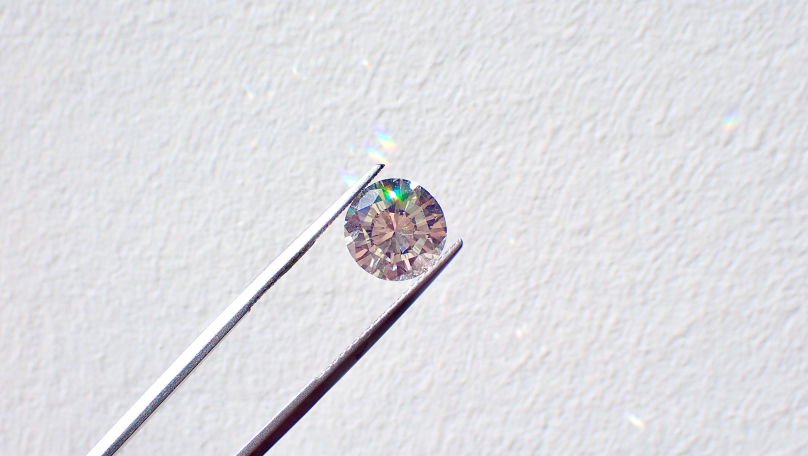
The 4 C's and your diamond certificate
Carat
Precise weight of your diamond in carats, weighed loose (outside the setting).
Color
Graded by comparing to a set of master stones under white lab lighting.
Clarity
Inspected under 40x magnification and determined subjectively by the grader(s).
Cut
Measured with laser technology and graded according to the lab’s tolerance for cut, polish and symmetry grades.
Fluorescence
Inspected under UV light to determine the color emission.
Certificate number
Verifiable online and often lasered on the diamond itself (standard with GIA certificates)
Plotting
Manually drawn by the grader. Appears usually on large certificates only.
Does your diamond certificate tell you everything?
Absolutely not. While standardized grading will assist you in making a decision on what to buy, there are many nuances that can’t be determined by ‘on paper’ grading alone. AI tools to bundle similarly graded stones and advise on what is better or worse value are simply marketing tools. They over simplify the process and exploit the buyers’ own lack of professional knowledge.
So what can be missed?
Milkiness or haziness
Milky or hazy diamonds can be caused simply by the type of raw diamond that the stone is cut from. Such a stone could have little or no inclusions such as feathers or carbon spots, making it appear like a clean diamond. Grading could range from VS2 to I1 depending on the severity of the milkiness. Furthermore, fluorescence in extreme cases only can cause haziness. This is often misunderstood, causing buyer to avoid fluorescence (and potentially significant savings) despite no visible difference.
Eye clean or not
Whether a diamond is eye clean or not can depend on multiple factors. The type and position of the inclusion, the shape and carat weight of the diamond and how strict the grading was in the first place. Even within GIA grading, a VS2 diamond could be visibly included whereby an SI2 can be eye clean.
Face-up colorless-white?
As diamond color grading is performed by inspecting the loose diamond on its side, under lab lighting, it won’t tell you whether your diamond is going to look white face up when set in your jewelry. This will depend on the shape of the stone, how well it’s cut, fluorescence and the hue of the color. Brown, yellow or mix-tones are not specified on the diamond certification. Slight brown colors appear whiter in white and rose gold, whereas yellow and mix-tones appear whiter in yellow gold.
Do I need this?
Perhaps the trickiest, but ultimately the most important decision to make is where to draw the line on how high up you go on the diamond grading scale and where you’re ‘safe’ to compromise. Given the large number of factors, including the budget, your own priorities, the jewelry design, metal and any diamond accents, we’d recommend reaching out to us to help you narrow down your options. For example, should you insist on D grading over G or save your money? Should you compromise on the fluorescence in order to get a higher carat weight?
At the core of the decision should be your values and preference priorities. Size over quality, investment over practicality, aesthetics over on paper grading, tradition over eco-friendly.
FAQs
Why buy a certified diamond?
Diamond certification is your certificate of quality and authenticity. Without it, you’ll need to be an expert yourself to determine what you’ve purchased.
Are Shiree Odiz diamonds certified?
Yes. We provide independent grading with all diamonds over 1 carat.
Is GIA graduate certification the same as GIA certification?
No. A GIA graduate simply means they have studied gemology at the GIA. It does not mean they have the tools or the same discipline as the GIA lab.
Which diamond certification is best?
The strictest and most recognized is GIA. However, the best certification for you may depend on your priorities, budget and values.
How to verify diamond certification
All reputable diamond labs will have online verification for their certification. The website or QR code will appear on the certification itself.
